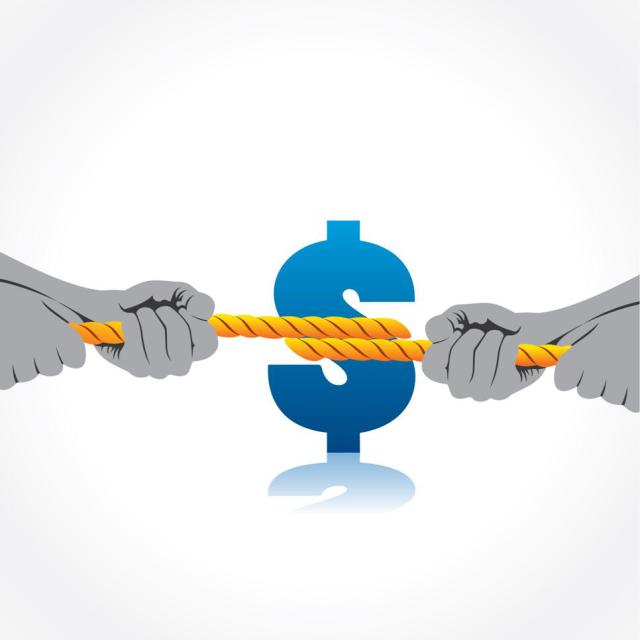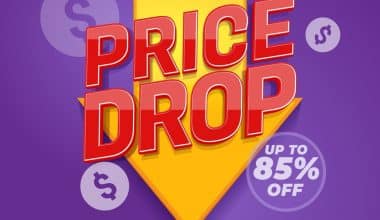Are you thinking of entering the exciting world of retail or are you just trying to learn more about this always-changing industry? Our daily lives are significantly influenced by the retail sector, which includes a diverse range of companies that offer products and services directly to customers. You can recognize prospective possibilities and problems by examining the situation of the retail market today and comprehending the particular peculiarities of the food retail sector. Additionally, keeping an eye on the most recent trends in the retail sector guarantees that you’ll stay ahead of the curve and be able to adjust to shifting market dynamics and consumer preferences. In this article, we will provide you with valuable insights into the retail industry, including an analysis of its current state, a focus on the food retail industry, the latest retail industry trends, and a clear explanation of what the retail industry entails.
Retail Industry
Businesses that sell products and services directly to customers for their own use are referred to as being in the retail industry. Additionally, it comprises a variety of retail establishments, including supermarkets, department stores, and specialty stores. The distribution of goods from manufacturers to final customers is greatly influenced by the retail sector. Additionally, it includes both physical stores and online merchants, catering to various client tastes and purchasing habits. As a crucial link between manufacturers and customers, the retail sector is a key economic sector.
Analysis of the Retail Industry
The analysis of the retail industry involves assessing its performance, trends, and challenges. Firstly, examine sales data and revenue growth to understand the industry’s financial health. Moreover, analyze consumer behavior and preferences to identify emerging trends and opportunities. Additionally, study competitors’ strategies and market share to gauge the industry’s competitiveness. Furthermore, consider technological advancements and e-commerce growth, which are impacting the retail landscape. In conclusion, conducting a comprehensive analysis helps stakeholders make informed decisions and adapt to the evolving retail environment.
Food Retail Industry
The food retail industry is a vast and indispensable sector that plays a crucial role in ensuring the availability and accessibility of food products to consumers. It comprises a wide range of enterprises, from neighborhood supermarkets and grocery stores to specialty food stores and internet grocery sellers. These establishments provide a wide variety of food items, such as fresh produce, packaged foods, dairy products, meat, and other necessary food items that appeal to a wide range of consumer preferences and dietary requirements.
The food retail industry contributes significantly to the economy, earning significant money and offering countless job possibilities. It not only provides food to consumers, but it also serves as a distribution channel for food manufacturers and suppliers. Food merchants are responsible for inventory management, product quality assurance, and the implementation of successful marketing tactics to attract and keep customers. Furthermore, they are critical in promoting food safety and hygiene standards in order to protect the health of customers.
Moreover, the food retail industry has experienced significant transformations driven by technological advancements and changing consumer behavior. Online grocery shopping and food delivery services have gained popularity, offering consumers added convenience and options for shopping. With a growing focus on health and wellness, food retailers are expanding their selections of organic, natural, and locally sourced products to meet evolving consumer demands.
In conclusion, the food retail industry remains an indispensable part of daily life, providing consumers with a wide variety of food choices while contributing to economic growth and stability. As consumer preferences and technologies continue to evolve, food retailers must adapt to these changes and continue to innovate to thrive in this dynamic industry.
Read: RETAIL ASSOCIATE: Meaning, Duties, Resume & Guide
Retail Industry Trend
The retail industry is constantly evolving, driven by changing consumer preferences and technological advancements. E-commerce has significantly impacted traditional brick-and-mortar stores. Retailers are adapting to meet consumers’ demands for convenience, personalization, and seamless omnichannel experiences. Artificial intelligence, data analytics, and automation are transforming retail operations and supply chains. Sustainability and social responsibility have become key considerations for consumers, influencing retailers to adopt eco-friendly practices. The COVID-19 pandemic has accelerated the shift towards online shopping and contactless payments. Retailers are embracing innovative technologies, such as augmented reality, virtual try-ons, and smart mirrors, to enhance the shopping experience. Personalization and targeted marketing are becoming vital to engage customers and foster brand loyalty in the competitive retail landscape.
What Is an Example of a Retail Industry?
An example of a retail industry is clothing stores. They sell clothing and accessories directly to consumers. Moreover, these stores offer a wide range of fashion items, catering to diverse consumer tastes. Additionally, they often operate brick-and-mortar stores and online platforms to reach a broader audience. Furthermore, clothing retailers use marketing strategies to showcase their latest collections and attract customers. In conclusion, clothing stores exemplify a significant segment of the retail industry, fulfilling consumers’ fashion needs.
What Are the 7 Retail Sectors?
The seven retail sectors are:
- Apparel and Accessories: Stores selling clothing, footwear, and fashion accessories to consumers.
- General Merchandise: Large retailers offer a wide variety of products, including groceries, electronics, and household items. Home Improvement and Appliances: Stores specializing in home improvement supplies, furniture, and appliances.
- Specialty Stores: Retailers focusing on specific product categories like electronics, books, or sporting goods.
- Food and Beverage: Grocery stores, supermarkets, and convenience stores sell food and beverages to consumers.
- Health and Personal Care: Pharmacies and stores offering personal care products, cosmetics, and pharmaceuticals.
- E-commerce: Online retailers sell a wide range of products to consumers through Internet platforms.
These retail sectors represent diverse areas of the consumer market, catering to various needs and preferences. Each sector has its unique characteristics, product offerings, and target audience, contributing to the vibrancy and complexity of the retail industry.
Read: RETAIL DATA ANALYTICS: All You Need To Know
What Are the 3 Types of Retailing?
The three types of retailing are:
- Brick-and-Mortar Retail: Traditional physical stores where customers can browse and purchase products in person.
- E-commerce Retail: Online stores that operate over the Internet, allowing customers to shop from their devices.
- Omnichannel Retail: Retailers that integrate both physical and online channels to provide a seamless shopping experience.
Each type of retailing offers unique advantages and caters to different consumer preferences and shopping behaviors. Retailers often utilize a combination of these types to maximize their reach and effectively engage with customers in today’s diverse retail landscape.
What Markets Are in the Retail Industry?
The retail industry spans a wide array of markets, each catering to specific consumer demands and preferences. The food and grocery market consists of supermarkets, hypermarkets, convenience stores, and specialty food shops. However, These establishments provide consumers with essential food items, fresh produce, and packaged goods, serving as an integral part of daily life.
The apparel and fashion market includes clothing stores, fashion retailers, and specialty boutiques. It offers a diverse selection of apparel, footwear, and also accessories, reflecting the latest trends and styles to meet varying consumer fashion preferences.
The consumer electronics market focuses on electronic goods and gadgets, including smartphones, laptops, TVs, and other technology-driven products. Retailers in this market also offer the latest technological advancements, enabling consumers to stay connected and entertained.
The home improvement market comprises stores specializing in hardware, furniture, home decor, and DIY supplies. From renovating and redecorating to maintaining their homes, consumers rely on this market to meet their household needs.
In conclusion, the retail industry’s diverse markets collectively contribute to consumers’ daily lives by offering an extensive range of goods and services. Each market caters to different aspects of consumer life, ensuring that various needs and desires are met in an ever-evolving and dynamic retail landscape.
What Are the 4 Types of Retailers?
The four types of retailers are:
- Independent Retailers: Small, privately-owned stores operated by individuals or families.
- Chain Retailers: Multiple stores under the same brand, owned and managed by a single company.
- Franchise Retailers: Stores that operate under a franchise agreement with a larger parent company.
- Department Stores: Large retailers that offer a wide variety of products and departments under one roof.
Read: BEST RETAIL COMPANIES TO WORK FOR: 11 Best Retail Employers 2023
What Are the 5 Broad Areas of Retailing?
The five broad areas of retailing are:
- Food and Grocery: Retailers sell food items and groceries to consumers for daily consumption.
- Apparel and Fashion: Stores offering clothing, footwear, and also accessories for fashion-conscious consumers.
- Electronics and Appliances: Retailers selling electronic goods and household appliances to meet consumer needs.
- Home and Furniture: Stores specializing in home improvement supplies, furniture, and also home decor products.
- Health and Personal Care: Retailers also provide pharmaceuticals, personal care products, and beauty items to consumers.
These broad areas encompass various markets within the retail industry, catering to different consumer needs and preferences. From everyday necessities to luxury items, retailers in these categories play a significant role in meeting diverse consumer demands.
What Are the Main Retail Categories?
Each of the major categories in the retail sector caters to particular consumer demands and preferences. Firstly, the grocery stores, supermarkets, and specialty food stores that offer daily dietary necessities, fresh produce, and beverages fall under the food and beverage category. These merchants are also essential in ensuring that customers have access to a wide range of wholesome and fresh products to satisfy their nutritional needs.
Furthermore, there are a variety of clothes stores, fashion boutiques, and shoe stores in the apparel and accessories area that cater to people of various ages and fashion preferences. Retailers in this category meet the wide-ranging fashion preferences of their customers by offering both current and contemporary attire as well as timeless and classic pieces.
The electronics and appliances category also includes shops that sell electronic devices, home appliances, and tech-related goods. These shops also, provide a wide range of products with an emphasis on innovation and cutting-edge technology to keep customers connected, amused, and productive in their daily lives.
Additionally, shops that specialize in furniture, home decor, and home renovation materials are included in the home and furniture category. Customers can choose from a variety of materials to design the perfect living spaces, whether they are remodeling, redecorating, or keeping a property.
FAQs
What is the retail industry's primary focus?
The Retail Sector. The sale of goods and services to the general public for consumption is referred to as retail. However, retailing encompasses all operations required to advertise consumer goods and services to consumers who buy for personal or family purposes at a point of purchase.
What are the two major types of retailers?
Retailers are classified into two sorts: store retailers and non-store merchants, which are further classified into retail types. Product lines distinguish retail kinds.
How many businesses are there in the Retail Trade industry in the US in 2023?
As of 2023, there are 3,131,030 Retail Trade firms in the United States, a 2.7% growth from 2022.
Related Articles
- E-COMMERCE BUSINESS INSURANCE: Best Coverage and All You Should Know
- RETAIL MARKETING: Definition, Types, Strategies & Why Is It Important?
- ONLINE RETAIL: All You Need To Know
- RETAIL INSURANCE: Meaning & How to Get One for Your Business
- RETAIL BUSINESS: Definition, Types & How to Start It






